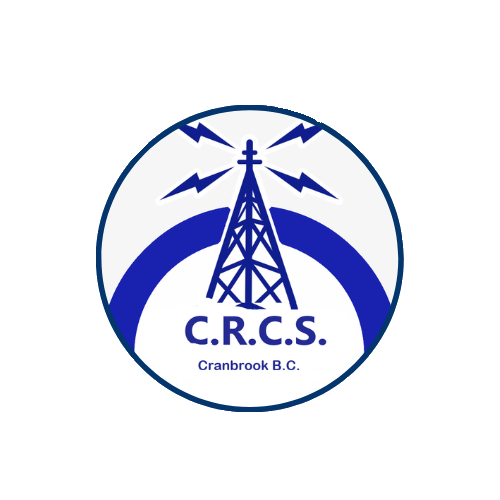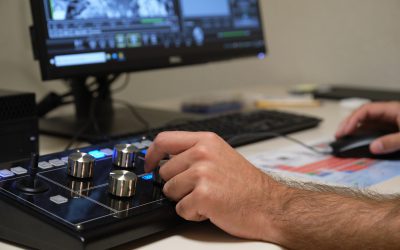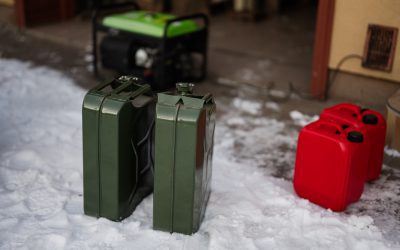Few topics in amateur radio generate as much confusion as antenna tuners. You’ll hear everything from “a tuner fixes a bad antenna” to “you don’t need one at all.” Somewhere between those extremes lies the truth.
At CRCS, we know how easy it is for misinformation to spread across airwaves and online forums. So let’s cut through the static. This post is designed to clear up the most common myths about antenna tuners, explain what they really do, and help you decide when and how to use one in your own station.
By the end, you’ll have a grounded understanding of what happens between your transmitter, feedline, tuner, and antenna—and why a well-matched system is worth your time.
What Does an Antenna Tuner Actually Do?
Here’s the simplest way to put it:
An antenna tuner doesn’t tune your antenna. It tunes the impedance that your transmitter “sees.”
Your radio wants to transmit into a load that matches its output impedance—usually 50 ohms. When the antenna and feedline combination present something different (say, 25 ohms or 300 ohms), the mismatch can cause reflected power—what we measure as a high SWR (Standing Wave Ratio).
The antenna tuner acts as a buffer. It adjusts the impedance seen by the transmitter so it looks like a clean 50-ohm load, even if the antenna system isn’t perfect. This keeps your transmitter happy, prevents it from throttling power, and helps you make the most of your setup.
Myth #1: “A tuner fixes a bad antenna.”
This is the most common misunderstanding among new hams—and one of the most persistent myths.
An antenna tuner does not repair or improve a physically inefficient antenna. It can’t make a 10-foot wire radiate like a full-size 80-meter dipole. What it can do is make your radio work into that mismatch without damage.
Think of it like glasses for your radio—improving how the radio sees the antenna, not how the antenna works.
If your antenna is too short, poorly located, or lossy, the tuner can’t change the fact that you’re losing signal as heat. Efficiency depends on the antenna’s design, materials, and installation—not the tuner.
The takeaway: Use a tuner to match, not to mask.
Myth #2: “If I have low SWR, I don’t need a tuner.”
Low SWR is great—but it doesn’t tell the whole story.
If your antenna system is naturally resonant on the bands you operate, then yes, you might not need a tuner. But most antennas aren’t perfectly resonant across multiple bands. Even a broadband antenna like a fan dipole or off-center-fed dipole can drift as frequency changes or weather affects feedline conditions.
A tuner gives you flexibility. It lets you operate slightly outside the resonance points without re-cutting or re-tuning your antenna physically.
For example, a 40-meter dipole cut for 7.150 MHz may have an SWR below 2:1 across the middle of the band but rise significantly at the edges. A tuner flattens that curve so your transmitter still delivers full power.
In short: a tuner isn’t always required—but it’s a handy tool for keeping operations smooth across the bands.
Myth #3: “Built-in tuners are just as good as external ones.”
Built-in tuners in modern transceivers are incredibly convenient, but they come with limits.
Most internal tuners can only match within a narrow range—typically up to about 3:1 SWR. That’s fine for small adjustments on an already resonant antenna, but it’s not enough to handle long, random wires or off-band operation.
External tuners—especially manual or high-power models—can handle much wider impedance swings (10:1 or more). They also allow the use of balanced feedlines, open-wire systems, and more complex multi-band setups.
When to use built-in:
-
Minor mismatch correction
-
Mobile or portable setups with tuned antennas
When to go external:
-
Multi-band HF operation
-
End-fed or random wire antennas
-
High-power amplifiers
At CRCS, many of us use both—internal for quick adjustments and external for more challenging loads.
Myth #4: “Automatic tuners waste power.”
Modern automatic tuners are surprisingly efficient. Once tuned, most present less than 1 dB of insertion loss—barely noticeable in practice.
Older tuners, or poorly designed ones with long feed paths or cheap components, might waste a bit more power as heat. But overall, the idea that tuners “eat watts” is overstated.
In fact, if you’re using a tuner correctly (between the transceiver and feedline, not between feedline and antenna), it helps you retain power by minimizing reflection and allowing full transmitter output.
Myth #5: “Tuners should always go at the radio.”
This depends entirely on your antenna system.
Placing the tuner at the radio is convenient and protects your transmitter from seeing high SWR—but it doesn’t fix the mismatch on the feedline itself. The line can still experience standing waves and associated losses.
Placing the tuner at the antenna feedpoint can correct both the antenna and the feedline mismatch. This approach (common in remote tuners) is ideal for long runs or multi-band non-resonant antennas.
Example: A long random wire fed with coax might exhibit high SWR on the line itself. Moving the tuner outside, close to the antenna feedpoint, ensures the coax carries a clean 50-ohm signal back to your shack.
Rule of thumb:
-
Shack tuner = protects transmitter
-
Remote tuner = fixes system-wide mismatch
Myth #6: “You can tune anything with enough adjustment.”
Not quite. While a good tuner can handle wide impedance ranges, some loads are simply too extreme—or unsafe—to tune effectively.
If your antenna presents an impedance of 5 ohms or 2000 ohms, even the best tuner may struggle. The reactive components can cause arcing, component stress, or severe power loss.
When you find yourself turning knobs endlessly with no sweet spot, that’s a clue that your antenna or feedline length is off.
Sometimes adjusting antenna length or feedline by even a few feet can bring impedance within a range your tuner can handle.
Understanding How Tuners Work
Let’s get slightly more technical.
A typical manual tuner uses one of three network types:
-
T-network: Two capacitors and one inductor (most common)
-
L-network: One capacitor and one inductor (simple and efficient)
-
Pi-network: Two capacitors and one inductor, often found in transmitters
Each network works to transform impedance between your transmitter and antenna system. Capacitors and inductors store and release energy out of phase, creating a match that balances reactive and resistive components.
Modern automatic tuners simply switch relays in and out to emulate these networks electronically.
Practical Tips for Using Antenna Tuners
1. Tune at low power first.
Always start at 5–10 watts when adjusting a manual tuner. This prevents damage to components if there’s a large mismatch.
2. Record your tuner settings.
If you use manual tuners, keep a small notebook or label near your rig noting band and frequency settings. It saves time the next time you operate.
3. Keep coax runs short.
Long coax runs with high SWR can cause significant power loss, even with a tuner. If possible, shorten or improve feedline quality.
4. Check for RF feedback.
Improper tuning or grounding can lead to RF feedback into your shack. If you notice hot mics, weird noises, or computer glitches, inspect your grounding and choke placement.
5. Use a tuner with a bypass mode.
Sometimes, your antenna doesn’t need tuning at all. Bypass modes help you compare performance and avoid unnecessary losses.
Common Missteps and How to Avoid Them
Misstep 1: Tuning into a dummy load without knowing it.
If your feedline is shorted, open, or miswired, you might be tuning the line—not the antenna. Always verify your connections.
Misstep 2: Over-tuning for perfect SWR.
Chasing a 1.0:1 SWR is rarely worth it. Anything below 1.5:1 is excellent, and even 2:1 is usually fine.
Misstep 3: Ignoring heat.
High SWR or mismatched systems can stress components and cause tuners to overheat. Feel the unit after extended transmissions—it should be warm, not hot.
Misstep 4: Expecting miracles from small tuners.
Compact tuners are great for portable work but aren’t built for high power or wide impedance ranges. Match your tuner to your operating style and output.
Choosing the Right Tuner for Your Shack
Your ideal tuner depends on how you operate.
Portable/QRP Operators:
-
Lightweight manual or compact automatic tuners
-
Battery-powered or simple knob-adjustment models
-
Example: ZM-2 or LDG Z-817
Base Station Hams:
-
Medium to high-power tuners (300–1500 watts)
-
Wide matching range
-
Bypass and peak-reading wattmeter preferred
-
Example: MFJ-949E or Palstar AT2K
Remote/Field Installations:
-
Weatherproof automatic tuner near antenna feedpoint
-
Requires 12V control cable or remote power
-
Example: Icom AH-4, LDG RT-100
When in doubt, ask your local club. CRCS members love helping each other match the right gear to their operating style.
The Science Behind the “Match”
When your antenna system is mismatched, part of your transmitted energy reflects back toward the transmitter. This reflection forms a standing wave pattern along the feedline, measured as SWR.
A perfect match (1:1 SWR) means all energy is radiated outward. A 2:1 SWR means roughly 10% of power is reflected—not catastrophic, but less efficient.
The tuner doesn’t “fix” this mismatch—it just hides it from your transmitter. That’s why understanding the difference between matching and radiating is key.
For best performance, both must work together: a resonant antenna and a properly tuned system.
Antenna tuners are some of the most misunderstood tools in amateur radio, but they’re also among the most useful.
They’re not magic boxes, and they won’t make a poor antenna perform like a beam on a tower—but they do make your station more flexible, protect your gear, and help you operate efficiently across multiple bands.
At the Cranbrook Radio Club Society, we encourage every ham to understand what’s really happening between their radio and antenna. A little knowledge goes a long way in improving your signal, efficiency, and confidence behind the mic.
So next time someone tells you “a tuner fixes everything,” you’ll know better. It’s not about fixing—it’s about matching. And when your system is matched right, your signal will carry farther and sound clearer.
73 from all of us at CRCS—see you on the bands!




